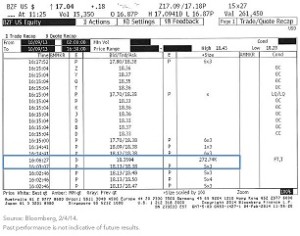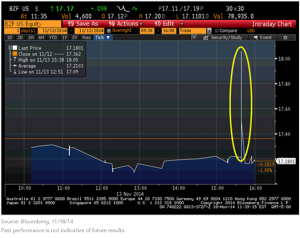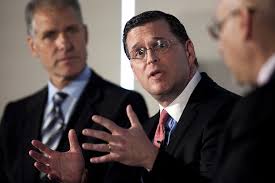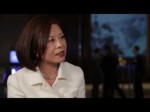MarketMuse update courtesy of Zacks.com from Nasdaq.
The U.S. aviation industry has been on cloud nine since the oil price succumbed to gravity. Moreover, a pickup in the domestic economy, rising cargo demand, a boost to tourism and the subsiding Ebola scare put the industry in the top-performing category. The sentiment around the sector was so bullish that Airlines rocketed to the highest level since 2001 in late December, per Bloomberg.
Investors should note that the ETF industry was largely unable to reap the return out of this booming industry as Guggenheim closed the last airline ETF Guggenheim Arca Airline ETF (FAA) in 2013. Prior to that, Direxion Airline Shares ETF (FLYX) had also faced the same fate in 2011. However, to fill the void, a new airline ETF has been filed lately. The fund looks to trade under the name of U.S. Global Jets ETF (JETS) .
The Proposed Fund in Detail
The passively managed product intends to track the U.S. global Jets Index that considers worldwide airline companies, per the prospectus. The index attaches weight to the companies on the basis of the square root of their average daily volume seen in the trailing three months. The index looks to consider 25 to 40 airline stocks across the market. The product will charge 60 bps in fees.
How Does it Fit in a Portfolio?
The global aviation industry holds a steady outlook for 2015. The outlook is especially positive for the U.S. economy, with GDP growth gaining momentum. Consolidation benefits, growing travel demand and enhanced ancillary revenues also provide an impetus for growth. Other regions including the Middle East, Latin America & Africa and Asia-Pacific also hold promise.
Several Gulf-based airlines continue to build up their positions within the global airline industry. Fleet development should improve over the coming years. Apart from the high demand from the oil rich Gulf nations, a major part of the fleet demand will be driven by China and India, and continuous expansion of low budget carriers around the world.
If this was not enough, an unexpected plunge in oil prices turned out to be the real catalyst in propelling the industry. Airline profit outlook depends on fuel prices, the major variable component in the industry. The oil price drop of about 50% seen in 2014 is yet to turn around in 2015. In such a bullish backdrop, the upcoming airline ETF has every reason to be successful, if it gets approval.
ETF Competition
The road ahead for the proposed ETF is nothing but clear skies. The industry has long been waiting for such a product after the shutdown of the Guggenheim fund. While there are no direct competitors to the product, investors should note that two transportation ETFs, namely iShares Transportation Average ETF ( IYT ) and SPDR S&P Transportation ETF ( XTN ) have weight in the airlines industry. While IYT puts about 45% of its weight in the airlines, air freight & logistics sectors, XTN places about one-fourth of the fund in them.
We expect the newly filed product to cash in on the underlying sector’s allure and find a solid following among investors. Nonetheless, the two transportation ETFs could eat into the proposed fund’s asset base because of the formers’ diversified approach to the transportation sector. Still, investors solely eyeing the global aviation industry would be satisfied by the proposed JETS ETF.
















